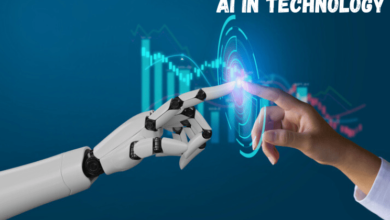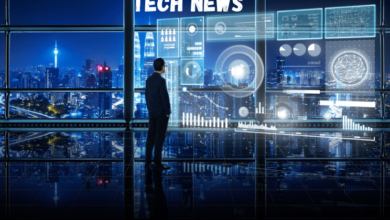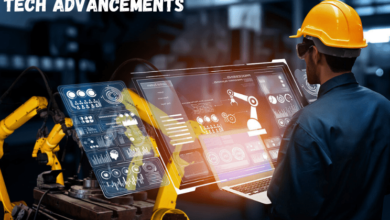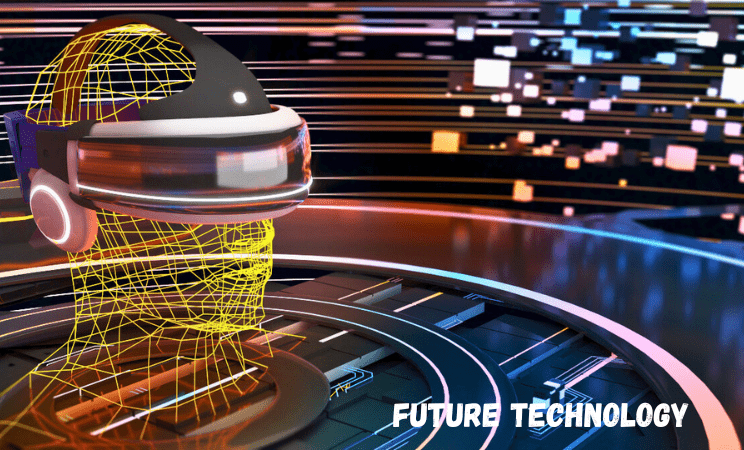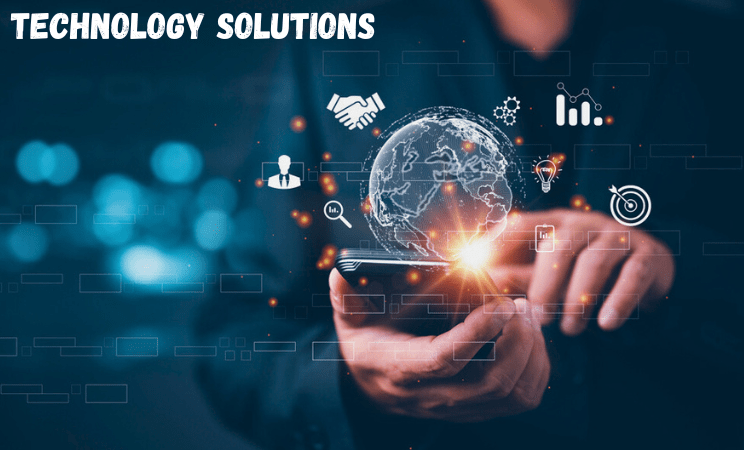Emerging Tech: Unveiling The Next Big Innovations in Technology

Emerging Tech: In the ever-evolving landscape of technology, innovation is the driving force that propels society forward. From the invention of the wheel to the development of the internet, each era has been marked by groundbreaking innovations that have reshaped our lives.
As we stand on the cusp of a new decade, it’s time to peer into the crystal ball and explore the next big innovations in technology that are set to transform the world as we know it.
These emerging tech are poised to revolutionize industries, change the way we live and work, and create new opportunities for growth and progress.
Quantum Computing: Unleashing Unprecedented Processing Power
Quantum computing is not just the next step in the evolution of classical computing; it’s an entirely new paradigm. Unlike classical computers, which use bits to represent information as either 0 or 1, quantum computers use quantum bits or qubits. In quantum physics, qubits can be in multiple states simultaneously due to superposition and entanglement. This means quantum computers have the potential to solve complex problems at speeds that were previously unimaginable.
One of the most exciting aspects of quantum computing is its applications in fields such as cryptography and drug discovery. With the ability to process massive amounts of data in real time, quantum computers will be able to crack currently unbreakable encryption codes, posing new challenges to cybersecurity. On the other hand, they will also accelerate the drug discovery process by simulating and analyzing complex molecular structures.
Companies like IBM, Google, and Rigetti are already making significant strides in quantum computing research, and as the technology matures, it’s expected to become more accessible to a broader range of industries and researchers. We are on the cusp of a quantum revolution that will redefine what’s possible in computing.
Artificial Intelligence and Machine Learning: The Power of Data
Artificial Intelligence (AI) and Machine Learning (ML) are already an integral part of our lives, from virtual assistants like Siri and Alexa to recommendation algorithms on streaming platforms.
However, the next big leap in AI and ML will be driven by the convergence of vast amounts of data, powerful hardware, and advanced algorithms.
This convergence is leading to AI systems that are capable of more nuanced and context-aware decision-making. Autonomous vehicles, for instance, are benefiting from these advances as they navigate complex and dynamic environments. In healthcare, AI and ML are revolutionizing diagnostics and treatment planning by analyzing patient data to identify trends and potential issues.
Moreover, natural language processing (NLP) and computer vision are rapidly advancing, enabling AI to understand and interpret human language and visual cues more accurately. This has far-reaching implications for industries like customer service, where AI-powered chatbots and virtual agents can provide more human-like interactions.
5G Connectivity: The Backbone of the Future
The rollout of 5G networks is transforming the way we connect and communicate. With speeds up to 100 times faster than 4G, 5G connectivity will be the backbone of the emerging tech of the future.
This faster and more reliable network will unlock the full potential of the Internet of Things (IoT), enabling smart cities, autonomous vehicles, and a more connected world.
Imagine a world where you can download a high-definition movie in seconds, where virtual and augmented reality experiences are seamless.
And where remote surgery and real-time remote control of industrial equipment are possible. These scenarios will become a reality with 5G.
However, the full-scale deployment of 5G networks also comes with its own set of challenges, including concerns about security, privacy, and the need for massive infrastructure upgrades.
Nevertheless, the benefits of 5G connectivity are expected to outweigh these challenges, ushering in a new era of connectivity and innovation.
Biotechnology and Gene Editing: A Revolution in Healthcare
The field of biotechnology is witnessing an unprecedented revolution with the advent of gene editing technologies like CRISPR-Cas9. These tools allow scientists to modify genes with an unprecedented level of precision, offering the potential to cure genetic diseases, enhance crop resilience, and even alter the human genome.
In healthcare, gene editing holds the promise of personalized medicine, where treatments can be tailored to an individual’s genetic makeup. This can lead to more effective therapies and potentially cure previously untreatable diseases.
On the agricultural front, gene editing can help create crops that are more resistant to diseases and pests, reducing the need for pesticides and increasing food security. While the ethical concerns surrounding gene editing, especially in humans, are significant, the potential benefits are undeniable. As scientists and policymakers grapple with these ethical questions, the field of biotechnology is set to continue its rapid advancement.
Augmented Reality (AR) and Virtual Reality (VR): Changing How We Interact with the World
AR and VR are poised to change the way we interact with the world, both in our personal lives and in business.
While these emerging tech have been around for some time, they are reaching a tipping point where they are becoming more practical and accessible.
AR is already making its mark in industries like retail and gaming. Companies are using AR to enhance shopping experiences, allowing customers to try on clothes virtually or see how furniture would look in their homes. In gaming, AR is adding a new layer of immersion and interactivity to the experience.
On the other hand, VR is transforming areas like education and training. Virtual classrooms and training simulations are becoming more commonplace, enabling immersive and effective learning experiences. VR is being used in healthcare for pain management and therapy.
As these emerging tech become more sophisticated and affordable.
We can expect to see even broader adoption in various industries, from architecture and design to tourism and entertainment. The boundary between the physical and digital worlds will continue to blur, opening up new opportunities for innovation and creativity.
Sustainable Technology: Nurturing the Planet
Sustainability is a global imperative, and technology is playing a significant role in addressing environmental challenges. From renewable energy sources like solar and wind power to the development of more energy-efficient technologies.
The emerging tech industry is committed to reducing its environmental footprint.
Electric vehicles (EVs) are a prime example of how technology is advancing sustainability. As the infrastructure for EVs continues to grow, they are becoming more accessible and affordable. This shift to electric transportation has the potential to significantly reduce greenhouse gas emissions and combat climate change.
Additionally, advancements in battery technology are making renewable energy sources more reliable and accessible.
Energy storage solutions are essential for ensuring a consistent power supply from sources like solar and wind, even when the sun isn’t shining or the wind isn’t blowing.
In the realm of sustainable agriculture, precision farming technologies are helping farmers optimize their use of resources, reduce waste, and increase crop yields. This not only benefits the environment but also ensures food security for a growing global population.
Space Exploration: Beyond the Stars
Humanity’s fascination with space knows no bounds, and emerging tech are making it possible to explore the cosmos in unprecedented ways.
Space exploration is no longer limited to government agencies; private companies like SpaceX and Blue Origin are pioneering missions beyond Earth’s orbit.
Mars is a prime target for exploration, with both NASA and private companies planning missions to the Red Planet. The development of reusable rockets and spacecraft is significantly reducing the cost of space travel, making ambitious missions more achievable.
Space tourism is also on the horizon, with companies like Virgin Galactic and SpaceX planning to offer commercial flights to space. This could potentially open up space to a wider range of people, not just career astronauts.
Moreover, the search for extraterrestrial life continues with the advancement of powerful telescopes and space observatories. These instruments are helping astronomers and scientists discover exoplanets and assess their potential for habitability.
Blockchain and Cryptocurrency: Revolutionizing Finance and Beyond
Blockchain technology, which underlies cryptocurrencies like Bitcoin, is not just a digital ledger; it’s a transformative force with applications far beyond finance. The decentralized and tamper-proof nature of blockchain has the potential to revolutionize industries from supply chain management to voting systems.
In finance, cryptocurrencies and decentralized finance (DeFi) platforms are challenging traditional banking systems and providing financial services to people in underserved regions. Additionally, blockchain can enhance security and transparency in transactions, reducing fraud and errors.
Blockchain’s potential to transform supply chains is also significant. With a transparent and immutable ledger of every transaction and movement of goods.
It becomes much easier to trace the origin of products, ensuring authenticity and reducing the prevalence of counterfeit goods.
Brain-Computer Interfaces: Merging Mind and Machine
Brain-computer interfaces (BCIs) are blurring the line between human and machine.
Allowing for direct communication between the brain and external devices. While BCIs are still in the early stages of development, they hold immense promise for a wide range of applications.
In healthcare, BCIs can be used to help individuals with paralysis regain mobility by controlling robotic limbs or exoskeletons. They also have the potential to assist those with neurodegenerative diseases by enabling communication and control of their environment.
BCIs are also being explored for enhancing human capabilities, such as improving memory or cognitive performance. These applications could have significant implications for education and professional fields.
However, as with many emerging tech, ethical and privacy concerns must be addressed as BCIs become more sophisticated and integrated into daily life.
3D Printing: The Revolution of Personalized Manufacturing
3D printing is changing the way we manufacture and create products. This technology allows for the rapid prototyping and production of custom, intricate designs, from medical implants to aerospace components. It is also becoming more affordable and accessible to individuals, enabling a new wave of personal creativity and entrepreneurship.
In healthcare, 3D printing is being used to create patient-specific implants, prosthetics, and even complex organ structures. In the automotive and aerospace industries, 3D printing is revolutionizing the manufacturing process, reducing costs and lead times.
he consumer sector, the ability to create custom products is opening up new business opportunities. From personalized jewelry to custom furniture, 3D printing is empowering artisans and entrepreneurs to bring their unique creations to market.
Conclusion
The next big innovations in technology hold immense promise for reshaping our world. From quantum computing’s unprecedented processing power to the transformative potential of AI and ML.
The backbone of 5G connectivity, and the revolutionary applications of gene editing.
The future promises a dynamic fusion of science and creativity, driven by AR/VR and blockchain technologies. This blend sets the stage for an innovative and transformative era ahead. Sustainability, space exploration, brain-computer interfaces, and 3D printing further illustrate the remarkable possibilities we face.
However, as we stand on the brink of these technological advancements.
It is vital to approach them with responsibility, addressing ethical and privacy concerns. Regulations must be thoughtfully crafted to ensure equitable access and protection for all. By embracing these innovations while remaining vigilant about their implications.
We can collectively propel humanity toward a brighter, more promising tomorrow where innovation serves as a force for positive change and progress.
FAQs
What is quantum computing?
Quantum computing leverages qubits, not traditional bits, using superposition and entanglement, promising unparalleled computational power for complex problem-solving.
How does 5G differ from 4G?
5G delivers significantly faster speeds, reduced latency, and improved connectivity compared to 4G, empowering IoT and enhancing immersive experiences.
What are brain-computer interfaces (BCIs)?
BCIs are technology systems that connect the human brain to external devices, enabling tasks like controlling robotic limbs and enhancing cognitive abilities.
How does blockchain work?
Blockchain is a decentralized, tamper-proof digital ledger that records transactions across a network, ensuring transparency, security, and reduced fraud.
What is the significance of 3D printing?
3D printing revolutionizes manufacturing by enabling customized, intricate designs for everything from medical implants to consumer products, accelerating innovation.
